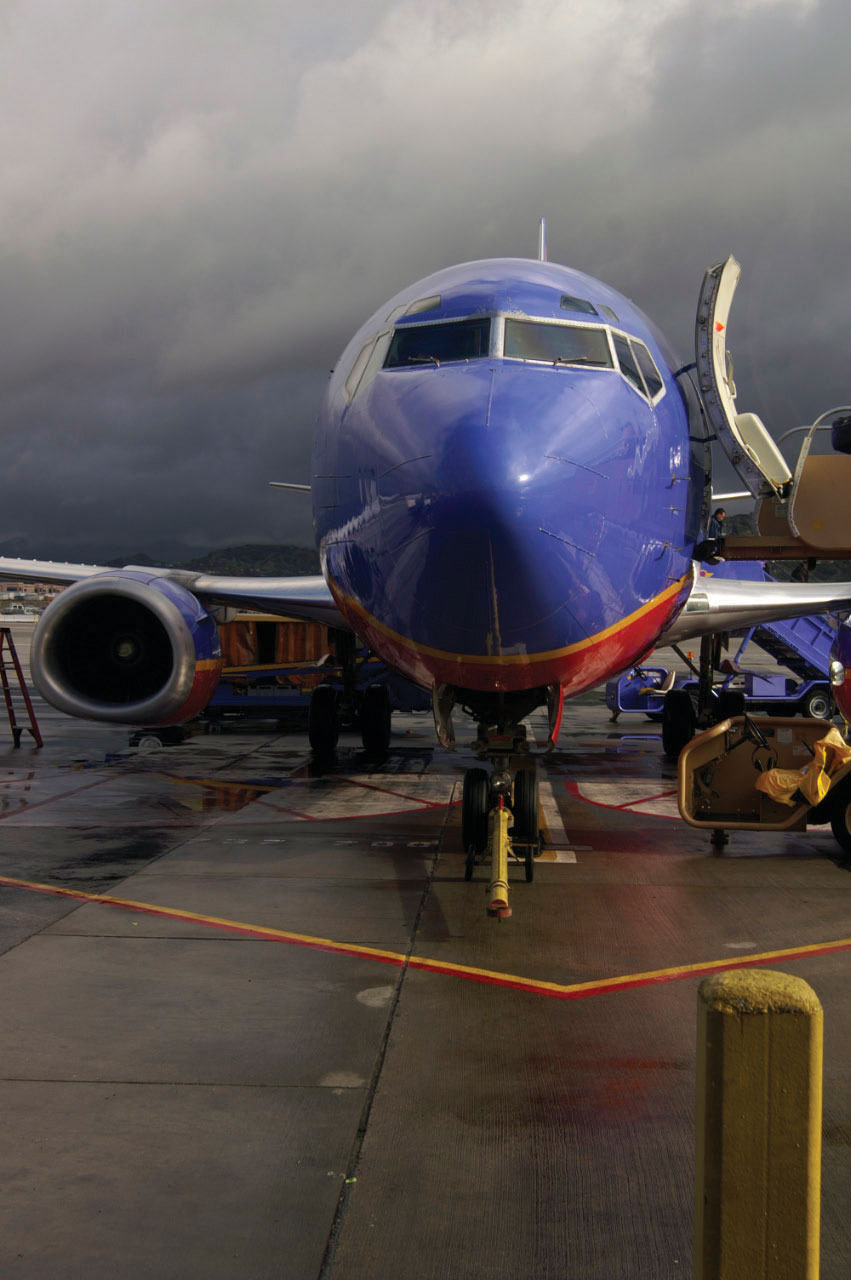19 Managing Firm Resources
Learning Objectives
After reading this chapter, you should be able to understand and answer the following questions:
- What is resource-based theory, and why is it important to organizations?
- In what ways can intellectual property serve as a value-added resource for organizations?
- How should executives use the value chain to maximize the performance of their organizations?
- What is SWOT analysis and how can it help an organization?
Southwest Airlines: Let Your LUV Flow
In 1971, an upstart firm named Southwest Airlines opened for business by offering flights between Houston, San Antonio, and its headquarters at Love Field in Dallas. From its initial fleet of three airplanes and three destinations, Southwest has grown to operate hundreds of airplanes in scores of cities. Despite competing in an industry that is infamous for bankruptcies and massive financial losses, Southwest marked its forty-first profitable year in a row in 2014.
Why has Southwest succeeded while many other airlines have failed? Historically, the firm has differed from its competitors in a variety of important ways. Most large airlines use a “hub and spoke” system. This type of system routes travelers through a large hub airport on their way from one city to another. Many Delta passengers, for example, end a flight in Atlanta and then take a connecting flight to their actual destination. The inability to travel directly between most pairs of cities adds hours to a traveler’s itinerary and increases the chances of luggage being lost and missed flights. In contrast, Southwest does not have a hub airport; preferring instead to connect cities directly. This helps make flying on Southwest attractive to many travelers.
Southwest has also been more efficient than its rivals. While most airlines use a variety of different airplanes, Southwest operates only one type of jet: the Boeing 737. This means that Southwest can service its fleet much more efficiently than can other airlines. Southwest mechanics need only the know-how to fix one type of airplane, for example, while their counterparts with other firms need a working knowledge of multiple planes. Similarly, Southwest only needs to train its pilots to fly one type of plane. Southwest also gains efficiency by not offering seat assignments in advance, unlike its competitors. This makes the boarding process move more quickly, meaning that Southwest’s jets spend more time in the air transporting customers and goods (and making money) and less time at the gate relative to its rivals’ planes (Schlangenstein & Hughes, 2010).

Organizational culture is the dimension along which Southwest perhaps has differed most from its rivals. The airline industry as a whole suffers from a reputation for mediocre (or worse) service and indifferent (sometimes even surly) employees. In contrast, Southwest enjoys strong loyalty and a sense of teamwork among its employees.
One tangible indicator of this culture is Southwest’s stock ticker symbol. Most companies choose stock ticker symbols that evoke their names. Ford’s ticker symbol is F, for example, and Walmart’s symbol is WMT. When Southwest became a publicly traded company in 1977, executives chose LUV as its ticker symbol. LUV pays a bit of homage to the firm’s humble beginnings at Love Field. More important, however, LUV represents the love that executives have created among employees, between employees and the company, and between customers and the company. This “LUV affair” has long been and remains a huge success. As recently as March 2011, for example, Southwest was ranked fourth on Fortune magazine’s World’s Most Admired Company list.
WestJet Airlines Ltd. of Calgary may have learned a thing or two from Southwest’s template for resource management. In 1996, WestJet started with three aircraft and five destinations (WestJet, 2012). Using only Boeing 737s, WestJet employees are also known for a culture of caring and fun on their flights. The airline was the first in Canada to introduce paperless ticketing, direct ticket purchase, and buy-on-board meal service, which other airlines have since adopted. WestJet has recently reconfigured the aircraft interiors with narrower aisles and lighter weight seating to increase capacity while decreasing aircraft weight. They have also adopted a second, smaller airplane, and have been moving into smaller, northern communities, where they have been well received.
WestJet uses the hub and spoke model, partly due to the configuration of its service area, such as destinations in northern Canada. Air Canada, the national air carrier, is mandated to serve all operating airports in Canada, including the smaller and remote communities. In contrast, WestJet can “cherry pick” its routes, a major contribution to its operational and financial efficiency.
References
Schlangenstein, M., & Hughes, J. (2010, September 28). Southwest risks keep-it-simple focus to spur growth. Retrieved from http://www.washingtonpost.com/wp-dyn/content/article/2010/09/28/AR2010092801578.html
WestJet. (2012). About WestJet. Retrieved from https://www.westjet.com/guest/en/about/

